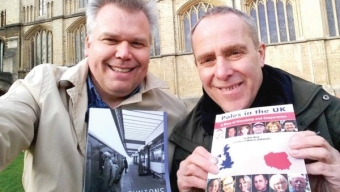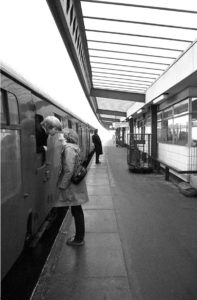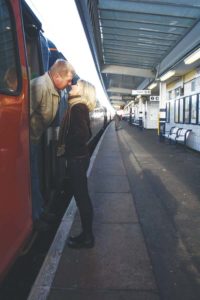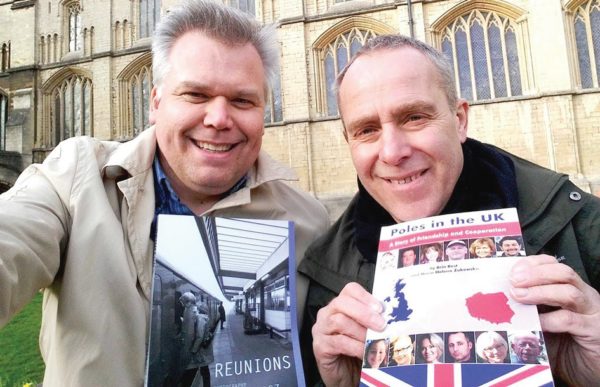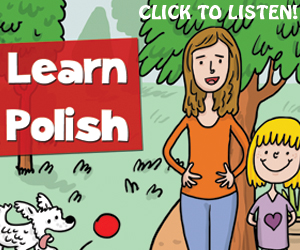I’ve had huge interest from all over the world, and many of my photographs went viral on the internet on such sites as BuzzFeed, where they’ve been viewed millions of times. I’ve had newspaper articles across Europe, I was interviewed live on Australian television and my photographs even took pride of place as part of the closing titles of a BBC Newsnight programme – says Chris Porsz in the interview with Brin Best.
“I was born in 1953 and brought up in Peterborough, where I’ve lived ever since. My parents were Polish and came to live here after surviving terrible horrors in World War II and what followed. My remarkable mum, who died in early March age 95, survived the Warsaw Ghetto and the notorious Pawiak Prison in the city. She later survived the Ravensbrück concentration camp in Germany, before coming to England in 1947, after marrying my dad in Germany.
My dad had been stationed with the army in Scotland, parachuted over Arnhem (The Netherlands) and later met my mum whilst in Germany. He was an expert toolmaker and worked for the local firm Perkins (makers of diesel engines), as well as being the Peterborough table tennis champion! He sadly died young from a rare form of dementia.
My mum had many different jobs in Peterborough, including being an assistant manager at the Embassy Theatre for 30 years. Many famous bands of the 1960s and 1970s played at this venue, including The Beatles, who my mum met.
My mum had witnessed many terrible things in her life and often uttered a simple, but profound phrase – ‘Just be kind’, she said. There’s a lot of power in this simple statement, and I’m trying my best to live by its message. My biggest regret is that my parents did not teach me the Polish language.”
You now work as a paramedic. How did that career start and what are the highs and lows of the job?
“In 1974 I dropped out of my social work course at Sheffield Polytechnic and became a hospital casualty porter, a role I really enjoyed for 13 years. However, after those years I fancied a change so I applied to join the ambulance service and received six weeks of first-aid training. Following further training I became a paramedic in 1990. In those days paramedic training was much more basic than today, whereas it now follows a more academic route.
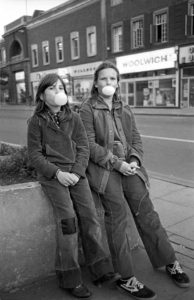
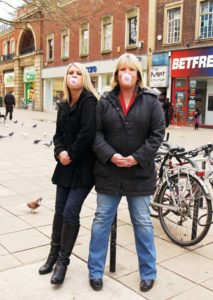 I’ve now had 30 years’ experience in the role, but you never know what the next day will bring. However, I’ve seen most things before and can quickly assess what needs to be done to try and save a life or make someone more comfortable. I do see a lot of difficult sights, and this helps me to make the most of living life, as it can so easily be taken away.”
I’ve now had 30 years’ experience in the role, but you never know what the next day will bring. However, I’ve seen most things before and can quickly assess what needs to be done to try and save a life or make someone more comfortable. I do see a lot of difficult sights, and this helps me to make the most of living life, as it can so easily be taken away.”
Your photography has recently become well known across the world through your extraordinary book Reunions. What was the idea behind this book?
“I got my first camera (a Kodak Instamatic) for a hitchhiking trip to North Africa, which I made with my future wife in the early 1970s. My interest in photography was developed further through taking images of my three children, but my real passion over many years has been street photography. I photographed intensively from the late 1970s till 1986, and had a long break from then until 2009, after which my passion was rekindled and I made up for lost time. When I’m not at work, I just love to indulge myself in street photography.
Over the years I built up a large library of images that I’d taken in my home city of Peterborough, and many of these had been published in my column in The Peterborough Telegraph, which was called ‘The Paramedic Paparazzo’. In 2009, they published some old photographs from the late 1970s and early 1980s and I had some exhibitions locally, and people started to recognise themselves in the images. The idea suddenly hit me that I could recreate the photographs today; I could try to find the people I photographed all those years ago (even though I had no contact details) and take new photographs in exactly the same locations. I could create some remarkable reunions and provide a record of these in new photographs, in a way that had not been done before.”
Tracking down people you photographed 35 years ago seems like an incredible challenge. How did you manage to find enough people to turn this project into a book?
“It took a huge amount of work, of course, with hundreds of hours of effort going into this aspect of the project. Thankfully, many people have helped me to track specific ‘targets’ down, and this has sometimes resulted in me travelling hundreds of miles to set up reunions. Occasionally, I ended up chasing the wrong person, which was very frustrating! However, through my newspaper column, my exhibitions and social media appeals we kept the project in the public’s imagination in Peterborough, and slowly the list of people I had tracked down grew.
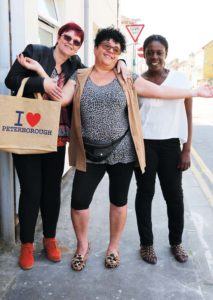 T
T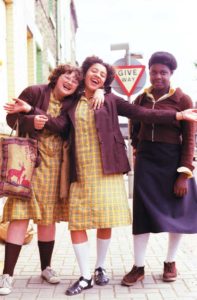 here are some incredible stories of how you found people. Tell us about one of your favourites
here are some incredible stories of how you found people. Tell us about one of your favourites
“On my travels around Peterborough I was always aware of the possibilities of tracking down people that I’d photographed in particular locations, many years ago. On one occasion, during a 999 call, I was in an Asian clothes shop and fortunately the patient didn’t require treatment. So I showed the shopkeeper an image of a little boy I had photographed nearby, over 30 years ago. The shopkeeper looked excited and pointed in the direction of a nearby street, where he was convinced the person depicted in my photograph lived. At the very moment he did this, that person came into view! I dashed outside, showed him the photograph and sure enough, he confirmed it was him in the image, and we were able to recreate the photograph the next day. This was a one in a million chance meeting!”
What has the reaction been like to your book?
“Totally incredible! I’ve had huge interest from all over the world, and many of my photographs went viral on the internet on such sites as BuzzFeed, where they’ve been viewed millions of times. I’ve had newspaper articles across Europe, I was interviewed live on Australian television and my photographs even took pride of place as part of the closing titles of a BBC Newsnight programme. My book has sold to most countries in world and we soon had to reprint it to keep up with demand. The whole experience has been amazing, and really satisfying.”
You’re clearly very passionate about your photography. What’s your next project?
“My first book, New England, focussed on my home city of Peterborough. Although it has an ancient heart, much of the city was built up as a new town in the 1970s. This first book, which contained photographs of Peterborough streets and their people, was in many ways the catalyst for Reunions. I would like to produce a hardback edition of Reunions and after that have another book in mind which will feature my new street photography.”
FURTHER INFORMATION:
You can learn more about Chris’s photography, and buy copies of Reunions, from Chris’s website at www.chrisporsz.com.
***
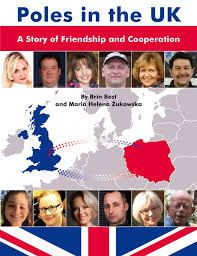 This interview was carried out as part of the ‘Poles in the UK’ project, and is linked to the book Poles in the UK: A Story of Friendship and Cooperation (by Brin Best & Maria Helena Żukowska, 2016).
This interview was carried out as part of the ‘Poles in the UK’ project, and is linked to the book Poles in the UK: A Story of Friendship and Cooperation (by Brin Best & Maria Helena Żukowska, 2016).
For more details see the Poles in the UK Facebook page and www.polesintheuk.net.






